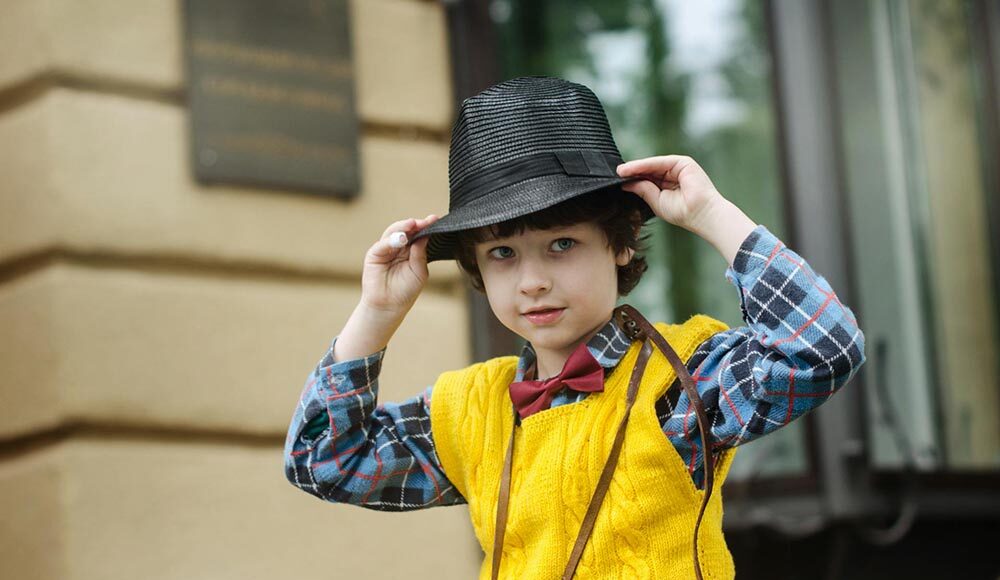School uniforms were designed with equality in mind, a way to keep classrooms looking cohesive and keep mornings simple.
But for a child with a strong sense of style, slipping into the same blazer and button-down every day can feel like being asked to erase part of their personality. The good news is there are countless ways for kids to stand out without breaking the rules, and with a little creativity, their uniforms can turn into a canvas for self-expression rather than a limitation. The trick is learning how to work within the guidelines, not against them, while still letting their individuality shine.
Starting With the Small Details
Uniform policies usually keep the big pieces in check, which means kids have to get strategic with subtler touches. Accessories carry more power than they get credit for. Hair clips, ties, socks, and even shoelaces can signal personality without being loud. If the rules are strict, parents can still help their children find tiny, allowable accents that hint at who they are. A striped hair ribbon, a patterned pair of socks peeking out under trousers, or even a slightly offbeat belt buckle can feel like small victories in a sea of conformity. When chosen thoughtfully, these pieces don’t just complement the uniform, they inject a hint of the unexpected. It’s less about rebellion and more about showing that creativity doesn’t disappear just because the outfit is prescribed.
This is also where kids start to develop an eye for curation. Deciding which accessory makes the cut teaches them about restraint, about balancing rules with imagination. Those decisions will shape their relationship with clothing as they grow older, showing them that even in the most uniform environments, there’s always room to be themselves.
The Fit Factor
Most parents think of uniforms as a done deal: you buy the required shirt, skirt, or trousers, and that’s the end of it. But fit changes everything. Take girls or boys school uniform pants as an example. The exact same pair can look dull on one child and stylish on another, all depending on tailoring. Slight adjustments in length, a hem that hits just right, or a waistband that actually sits comfortably can completely alter how confident a kid feels walking into class. Schools rarely outlaw tailoring, which makes it one of the smartest ways to give your child’s uniform a personal stamp.
Even the way pieces are worn can make a difference. Rolling up sleeves neatly, tucking in a shirt just so, or wearing a cardigan slightly looser than expected can all suggest intentionality rather than thoughtlessness. These small choices build confidence, and confidence is what makes people notice style in the first place. A kid who feels sharp in their uniform doesn’t blend in, even if technically they’re wearing the same thing as everyone else.
Shoes as a Style Statement
Footwear often becomes the battleground where individuality and uniform policy meet. Some schools require plain black or brown shoes, others allow sneakers, and the leeway can make all the difference. Even within tight restrictions, there’s room to maneuver. A polished loafer has a different personality than a lace-up Oxford. A minimalist sneaker carries a completely different energy than a traditional lace shoe. Parents who invest in well-made shoes give their kids a chance to feel distinct without stepping outside the rules.
Shoes also tell a story about care. A pair that’s scuffed and tired communicates a very different message than one that’s been polished or wiped clean. Teaching children to maintain their footwear instills pride, and that pride carries into how they carry themselves overall. Shoes aren’t just accessories in this case; they anchor the outfit, setting the tone for everything else. When kids feel like their shoes match their vibe, the rest of the uniform suddenly feels less like a costume and more like their own.
Comfort Is Cool
Confidence often depends less on what something looks like and more on how it feels. If a kid is tugging at stiff collars or squirming in itchy fabrics, they won’t project the confidence that makes style stand out. That’s where parents can step in with thoughtful choices. Stocking up on undershirts, choosing softer socks, or tailoring hems so pants don’t drag on the floor makes all the difference. Even a perfectly adjusted waistband can change how a kid feels during a long school day.
There’s also the matter of durability. Kids are active, and a school uniform is their second skin for hours every day. Choosing comfortable clothing for kids under the uniform, like breathable cotton layers or seamless basics, means they’re not distracted by discomfort. When children feel physically at ease, they’re more open to expressing personality through the other parts of their look. It sounds obvious, but comfort is one of the most overlooked building blocks of style, especially in the world of uniforms.
Personalizing With Grooming and Hair
When uniform rules strip away most options, grooming steps up as a subtle but powerful form of expression. Haircuts, braids, curls, and neat styles add character without stepping outside the dress code. Even within stricter rules about hair length or color, kids can find ways to add polish that speaks to who they are. A sharp part, a bun tied with a patterned ribbon, or hair left naturally textured can all send a message that feels intentional and personal.
This extends to how kids handle their daily routine. Learning to iron a shirt properly or shine their shoes might not sound like self-expression, but the act of care shows. A child who takes pride in how crisp their shirt looks will stand out against the crowd of wrinkled collars. Self-expression doesn’t always scream; sometimes it whispers through neatness and a sense of discipline. Parents can encourage this without nagging, framing grooming as a chance for children to take control of their own style narrative within the limits of the uniform.
Accessories That Walk the Line
Accessories are where kids can experiment with trends while staying within school rules. Watches, bracelets, necklaces, or even subtle pins on a backpack can add personal flavor. Schools may restrict flashy jewelry, but tasteful choices usually pass unnoticed.
A classic watch worn daily not only adds sophistication, it also becomes part of a child’s visual identity. The same goes for simple necklaces or rings. These small details can make the uniform feel less like something imposed from above and more like something they’ve made their own.
There’s also the playful territory of seasonal touches. Scarves in winter, rain boots on stormy days, or lightweight jackets when the weather dips all offer opportunities for individuality. While schools often dictate the basics, outerwear tends to be less strictly policed. Choosing pieces with personality—whether through color, cut, or texture—allows kids to express themselves as they move to and from the classroom. These moments of individuality might seem fleeting, but for a child developing a sense of identity, they matter.
Bringing It All Together
Helping a child stand out in a uniform isn’t about bending rules or fighting against policy. It’s about teaching them to work within boundaries while still staying true to themselves. Whether it’s through tailoring, grooming, accessories, or simply making sure they’re comfortable in what they’re wearing, the effect is the same: they project confidence. And in a sea of identical blazers, confidence is what people notice first. Parents who guide their children toward thoughtful choices give them more than just a way to dress. They give them a lifelong skill in self-expression, an ability to make any outfit their own, no matter the setting.
A Closing Note on Individuality
Uniforms may erase the obvious markers of fashion, but they don’t erase style itself. The art is in the small details, the choices that look minor but add up to something memorable. For kids who want to feel seen, these decisions aren’t superficial, they’re foundational. They’re learning that identity doesn’t depend on unlimited options, it thrives in how you use the options you do have. When nurtured the right way, that lesson carries them well beyond school walls, into a world where individuality is always waiting for the right details to bring it to life.
##





